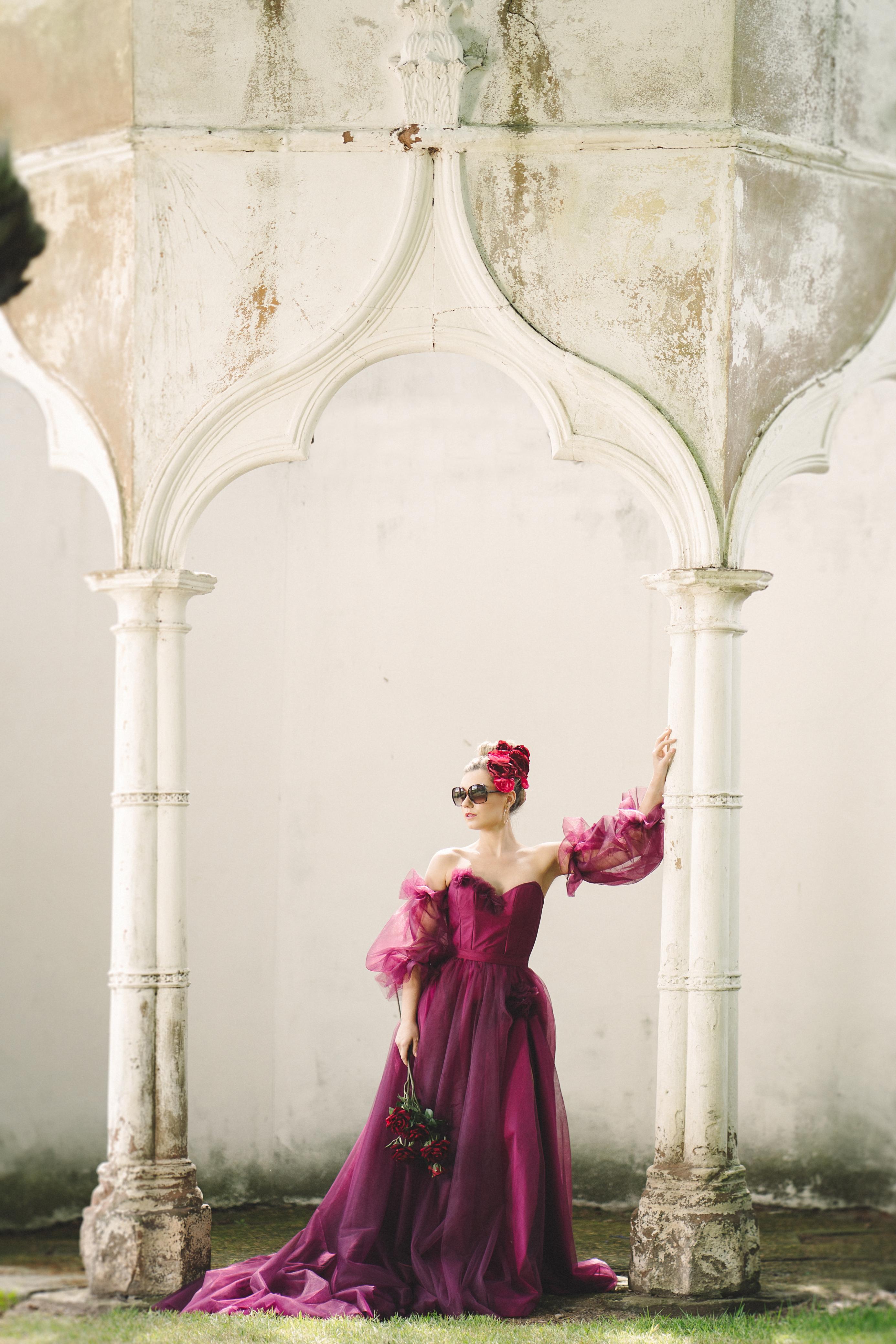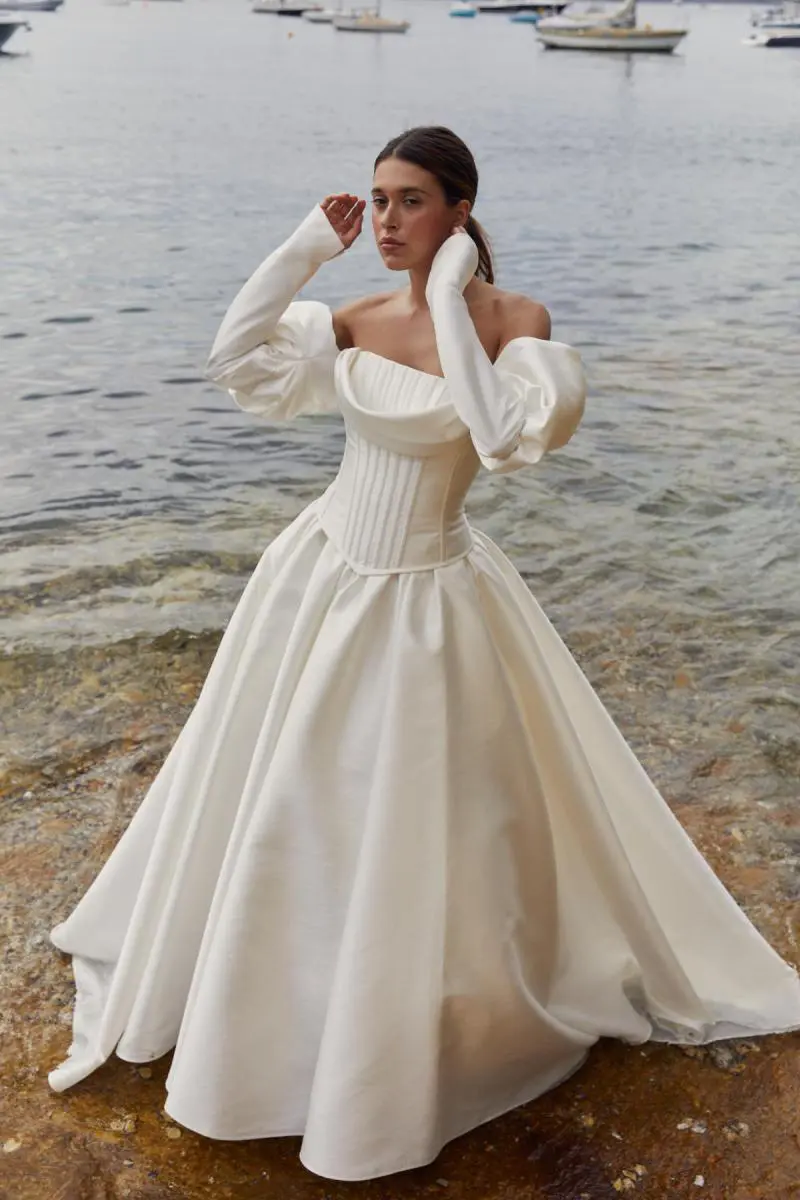### 1. **Era Selection**
- **1920s**: Look for flapper-style dresses with intricate beadwork and fringe. These dresses often feature a dropped waist and a more relaxed fit.
- **1930s**: Dresses from the 1930s usually have elegant, flowing lines and may include dramatic sleeves. Silk and satin are common materials.
- **1940s**: This era featured more structured dresses, often with high necklines and tailored bodices. Look for midi lengths and peplum details.
- **1950s**: Think tea-length swing dresses with full skirts and cinched waists. Polka dots or floral prints can add a fun twist.
- **1960s**: Mod dresses or bohemian styles are perfect for a non-traditional look. Look for mini dresses or empire waist gowns with bell sleeves.
- **1970s**: Maxi dresses with lace details and flowing sleeves offer a romantic, boho vibe.
### 2. **Fabric Choices**
- **Lace**: Antique lace can give a timeless look, especially in ivory or softer white tones.
- **Velvet**: Perfect for a winter wedding, adding a touch of luxury and warmth.
- **Silk and Satin**: Ideal for a sleek and elegant appearance, with a beautiful drape that flatters the figure.
- **Embroidery and Beadwork**: These details can add a unique flair and texture to a simple silhouette.
### 3. **Color Variations**
- Instead of traditional white, consider pastel shades like blush, mint, or lavender.
- Deeper tones like navy, burgundy, or even black can make a bold statement and still look bridal.
- Metallics like gold or silver can add a glamorous, vintage touch.
### 4. **Accessorizing**
- **Headpieces**: Opt for a birdcage veil, a floral crown, or a vintage tiara.
- **Jewelry**: Choose pieces that complement the era of your dress, like pearl necklaces or art deco earrings.
- **Shoes**: Consider Mary Janes or lace booties for earlier eras, or go for strappy sandals for a more recent decade.
### 5. **Mix and Match**
- Combining elements from different eras can create a unique, eclectic look. For example, a 1950s bodice with a 1970s flowing skirt.
- Incorporate modern elements to balance the vintage feel, such as a contemporary belt or a modern hairstyle.
### 6. **Where to Find**
- **Vintage Stores**: These are treasure troves for authentic pieces.
- **Online Marketplaces**: Sites like Etsy, eBay, and specialized vintage bridal shops online.
- **Rental Services**: Consider renting a vintage dress if you're on a budget or prefer not to keep the dress after the wedding.
- **Custom Tailors**: They can help modify or replicate vintage designs using vintage fabrics or patterns.
### 7. **Considerations**
- **Fit**: Vintage sizing can be very different from modern sizing, so alterations are often necessary.
- **Condition**: Check for any damage or stains that might be difficult to repair or clean.
- **Comfort**: Ensure the dress is comfortable enough to wear throughout the day, considering its fabric and fit.
Choosing a non-traditional vintage wedding dress allows you to express your personal style and perhaps even make a statement on your special day. It's all about finding a piece that resonates with you and makes you feel extraordinary.

540 × 360
Source:https://www.justinalexander.com/justin-alexander/collection/wedding-dresses/

4158 × 2772
Source:https://unconventionalwedding.co.uk/best-unique-and-alternative-wedding-dresses/

1200 × 800
Source:https://karenwillisholmes.com/wedding-dresses/

480 × 320
Source:https://lucycantdance.com/pages/vintage-wedding-dresses

1414 × 1064
Source:https://www.rockymountainbride.com/blog/25-nontraditional-wedding-dresses/

2048 × 1759
Source:https://www.unique-vintage.com/collections/wedding-dresses

2250 × 1500
Source:https://www.carol-hannah.com/

639 × 640
Source:https://www.harpersbazaar.com/wedding/bridal-fashion/a35341729/how-to-preserve-wedding-dress/

905 × 521
Source:https://www.cuttingedgebrides.com/blog/2019/04/non-traditional-wedding-gown-the-tea-length-wedding-dress/

853 × 1280
Source:https://www.hitched.co.uk/wedding-planning/bridalwear-articles/alternative-wedding-dresses/
